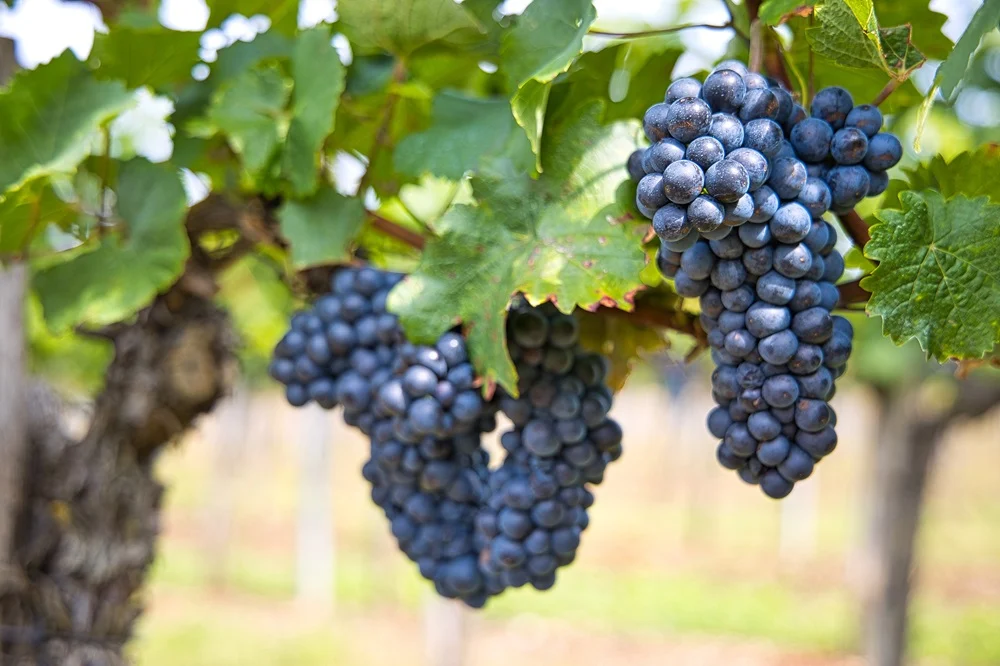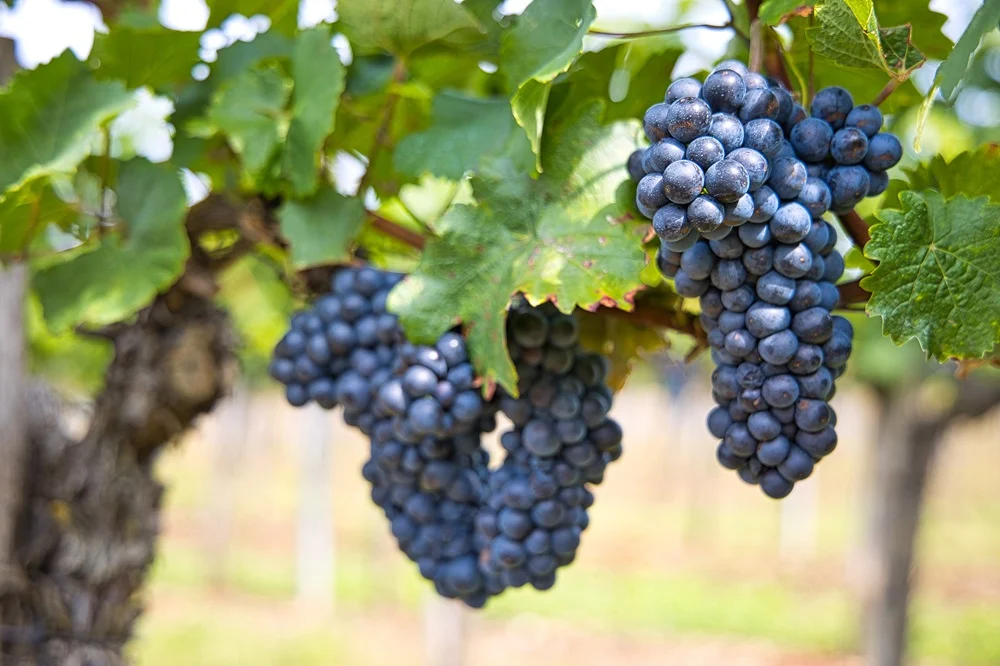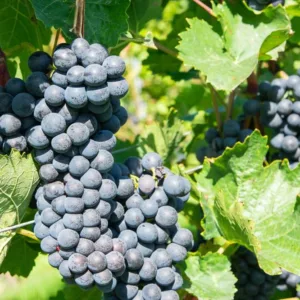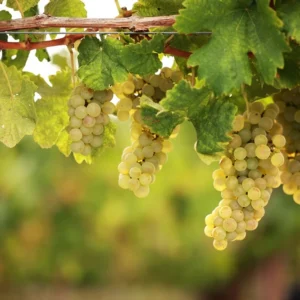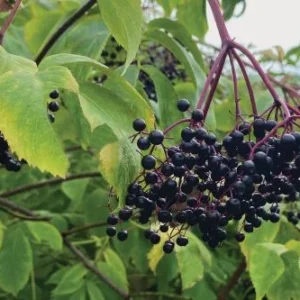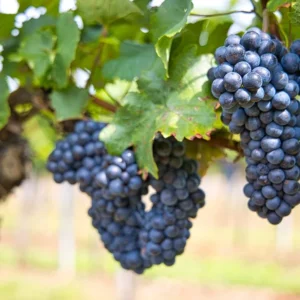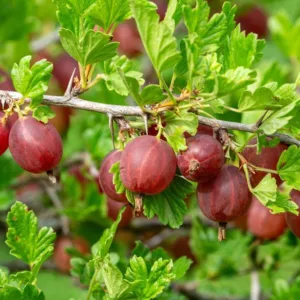Description
Concord Grape (Vitis labrusca ‘Concord’)
USDA Growing Zones: 4–8
Concord grape is a time-honored American favorite, best known for its bold, unmistakable flavor and cold-hardy nature. First cultivated in Concord, Massachusetts in the mid-1800s, this variety quickly became the standard for grape juice, jelly, and classic grape-flavored products. Its sweet, tangy taste and deep purple skin have made it a staple in home gardens and vineyards across much of the United States.
This deciduous vine is a vigorous grower, capable of producing long, sprawling canes that benefit from support via trellises or arbors. In spring, it produces clusters of small white flowers that attract pollinators and give way to large bunches of blue-black grapes by early to mid-fall. The grapes have a thick, “slip-skin” texture, where the skin easily separates from the juicy pulp—a characteristic trait of Vitis labrusca varieties.
Concord grapes grow best in full sun and well-drained soil. They are well-suited to USDA zones 4 through 8, and can withstand cold temperatures down to -20°F. For best results, the vines should be pruned heavily each winter, focusing on encouraging new growth while maintaining air circulation and light exposure.
These grapes are typically harvested in September, depending on location. The fruit is perfect for making fresh juice, homemade jelly, sweet wines, and baked goods. While they can be eaten fresh, the strong flavor and seeded nature make them especially popular for processing.
Though Concord vines are hardy, they can be susceptible to diseases like black rot and powdery mildew. Proper spacing, pruning, and site selection help reduce the risk of these issues.
Concord remains one of the most dependable and iconic grape varieties for northern growers, combining reliable yields with the nostalgic flavor of traditional American grape products.

